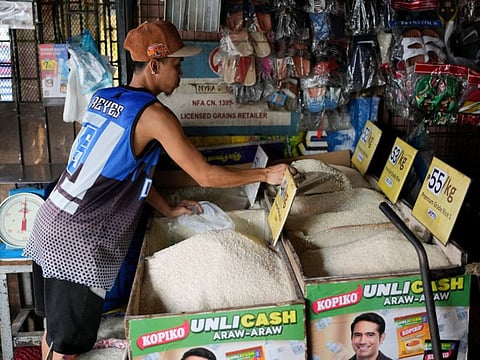Philippines curbs rice prices as inflation worry mounts
Philippine rice inflation hit 4.2 per cent in July, the highest since 2019

Manila: The Philippines announced price ceilings for rice on Friday to protect consumers, as the rising cost of the national staple probably caused August inflation to accelerate for the first time in seven months.
One of the world’s biggest rice importers, the Southeast Asian nation is cracking down on domestic price manipulation at a time of rising pressure from events such as the Russia-Ukraine conflict, India’s export ban, and unpredictable oil prices.
President Ferdinand Marcos Jr. has approved a maximum price of 41 pesos ($0.72) a kg for regular-milled rice, below the 42 - 55 pesos that prevailed on Wednesday in markets in and around the capital, Manila.
The maximum price for well-milled rice was set at 45 pesos a kg, below the range of 47 pesos to 56 pesos offered by retailers based on government data.
The ceilings will stay until Marcos lifts them, his office said in a statement.
Despite a steady supply of rice, authorities have reported a “widespread practice of alleged illegal price manipulation, such as hoarding by opportunistic traders and collusion among industry cartels in light of the lean season,” it added.
A farmers’ group welcomed the move.
“There is no reason for any price increase these past weeks as there is no rice shortage in the country,” the group, SINAG, said in a statement.
Philippine rice inflation hit 4.2 per cent in July, the highest since 2019.
The central bank expects headline inflation in August to settle within a range of 4.8 to 5.6 per cent, accelerating after hitting a 16-month low of 4.7 per cent in July, partly due to spikes in rice prices.
Philippine inflation has remained well above the bank’s target range of 2 per cent to 4 per cent, keeping it on its toes even as it held the policy rate steady for three straight policy meetings, after a series of hikes totalling 425 basis points.
“Monetary policy has little ability to control food inflation, but the Bangko Sentral ng Pilipinas may need to act if second-round effects become prominent and inflation expectations are de-anchored,” ANZ economists said in an August 25 note, using the official name of the central bank.
Sign up for the Daily Briefing
Get the latest news and updates straight to your inbox







